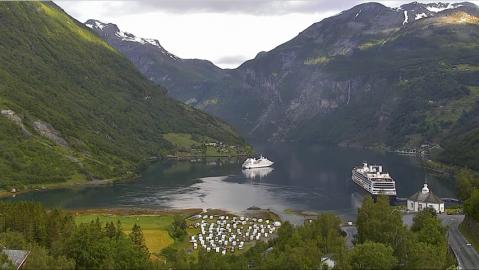Vor deutlich über 20 Jahren kam die Idee auf, tiefere als die nach Bühlmann errechneten Stops könne bei längeren Dekotauchgängen zu weniger Blasen und weniger DCS Fällen führen. Die Idee gilt inzwischen als widerlegt, aber: Um was geht es da eigentlich genau? Welche Formen von Deep Stops wurden und werden gemacht, und was ist tatsächlich darüber bekannt?
Wir werfen einen Blick auf die Geschichte der Deep Stops, das VPM Modell und einige Studien zum Thema.
Das pdf mit den Folien zum Vortrag findet ihr hier: https://www.punkfish-diving.com/uploads/1/3/7/3/13731412/deepstops.pdf
Kurzer Überblick:
- Einleitung
- Definition und Begriffsklärung ab 2:03
- Geschichte der Deepstops ab 6:10
- Ein Modell mit tieferen Stops: VPM-B ab 15:35
- Die NEDU-Studie ab 33:00
- Wienke: aktuelle Datenauswertung ab 44:00
- Studien von Marroni et al zu tieferen Sicherheitsstops bei Nullzeittauchgängen ab 53:00
- Post- Deep Stop World ab 1:07:00
Links zum Thema
Richard Pyle: The importance of deep safety stops, http://www.kursyinstruktorskie.eu/wp-content/uploads/2010/06/Deep_Safety_Stops1.pdf
"NEDU-Studie" - Doolette, DJ; Gerth, WA; Gault, KA. (2011) Redistribution of decompression stop time from shallow to deep stops increases incidence of decompression sickness in air decompression dives US Navy Experimental Diving Unit Technical Report 2011-06., https://www.johnchatterton.com/wp-content/uploads/2013/03/NEDU_TR_2011-06.pdf
Wienke BR (2015) Deep Stop Model Correlations. J Bioengineer & Biomedical Sci 5: 155. doi:10.4172/2155- 9538.1000155, https://www.researchgate.net/publication/283010479_Deep_Stop_Model_Correlations
Marroni, Alessandro & Bennett, P & Cronjé, Frans & Cali-Corleo, R & Germonpre, Peter & Pieri, Massimo & Bonuccelli, C & Balestra, Costantino. (2004). A deep stop during decompression from 82 fsw (25 m) significantly reduces bubbles and fast tissue gas tensions. (Article). Undersea & hyperbaric medicine : journal of the Undersea and Hyperbaric Medical Society, Inc. 31. 233-43. , https://www.researchgate.net/publication/8231784_A_deep_stop_during_decompression_from_82_fsw_25_m_significantly_reduces_bubbles_and_fast_tissue_gas_tensions_Article
Bennett PB, Marroni A, Cronje FJ, Cali-Corleo R, Germonpre P, Pieri M, Bonuccelli C, Leonardi MG, Balestra C. Effect of varying deep stop times and shallow stop times on precordial bubbles after dives to 25 msw (82 fsw). Undersea Hyperb Med. 2007 Nov-Dec;34(6):399-406. Erratum in: Undersea Hyperb Med. 2008 Jan-Feb;35(1):2 p preceding 241. PMID: 18251436.
Schellart, Nico & Corstius, Jan-Jaap & Germonpre, Peter & Sterk, Wouter. (2008). Bubble Formation After a 20-m Dive: Deep-Stop vs. Shallow-Stop Decompression Profiles. Aviation, space, and environmental medicine. 79. 488-94. 10.3357/ASEM.2164.2008., https://www.researchgate.net/publication/5350259_Bubble_Formation_After_a_20-m_Dive_Deep-Stop_vs_Shallow-Stop_Decompression_Profiles
Doolette: Gradient Factors in a Post-Deep Stop World. https://gue.com/blog/gradient-factors-in-a-post-deep-stops-world
https://thetheoreticaldiver.org/wordpress/index.php/2019/06/16/setting-gradient-factors-based-on-published-probability-of-dcs/
https://thetheoreticaldiver.org/wordpress/index.php/2019/07/30/fraedrich-follow-up/
Wir werfen einen Blick auf die Geschichte der Deep Stops, das VPM Modell und einige Studien zum Thema.
Das pdf mit den Folien zum Vortrag findet ihr hier: https://www.punkfish-diving.com/uploads/1/3/7/3/13731412/deepstops.pdf
Kurzer Überblick:
- Einleitung
- Definition und Begriffsklärung ab 2:03
- Geschichte der Deepstops ab 6:10
- Ein Modell mit tieferen Stops: VPM-B ab 15:35
- Die NEDU-Studie ab 33:00
- Wienke: aktuelle Datenauswertung ab 44:00
- Studien von Marroni et al zu tieferen Sicherheitsstops bei Nullzeittauchgängen ab 53:00
- Post- Deep Stop World ab 1:07:00
Links zum Thema
Richard Pyle: The importance of deep safety stops, http://www.kursyinstruktorskie.eu/wp-content/uploads/2010/06/Deep_Safety_Stops1.pdf
"NEDU-Studie" - Doolette, DJ; Gerth, WA; Gault, KA. (2011) Redistribution of decompression stop time from shallow to deep stops increases incidence of decompression sickness in air decompression dives US Navy Experimental Diving Unit Technical Report 2011-06., https://www.johnchatterton.com/wp-content/uploads/2013/03/NEDU_TR_2011-06.pdf
Wienke BR (2015) Deep Stop Model Correlations. J Bioengineer & Biomedical Sci 5: 155. doi:10.4172/2155- 9538.1000155, https://www.researchgate.net/publication/283010479_Deep_Stop_Model_Correlations
Marroni, Alessandro & Bennett, P & Cronjé, Frans & Cali-Corleo, R & Germonpre, Peter & Pieri, Massimo & Bonuccelli, C & Balestra, Costantino. (2004). A deep stop during decompression from 82 fsw (25 m) significantly reduces bubbles and fast tissue gas tensions. (Article). Undersea & hyperbaric medicine : journal of the Undersea and Hyperbaric Medical Society, Inc. 31. 233-43. , https://www.researchgate.net/publication/8231784_A_deep_stop_during_decompression_from_82_fsw_25_m_significantly_reduces_bubbles_and_fast_tissue_gas_tensions_Article
Bennett PB, Marroni A, Cronje FJ, Cali-Corleo R, Germonpre P, Pieri M, Bonuccelli C, Leonardi MG, Balestra C. Effect of varying deep stop times and shallow stop times on precordial bubbles after dives to 25 msw (82 fsw). Undersea Hyperb Med. 2007 Nov-Dec;34(6):399-406. Erratum in: Undersea Hyperb Med. 2008 Jan-Feb;35(1):2 p preceding 241. PMID: 18251436.
Schellart, Nico & Corstius, Jan-Jaap & Germonpre, Peter & Sterk, Wouter. (2008). Bubble Formation After a 20-m Dive: Deep-Stop vs. Shallow-Stop Decompression Profiles. Aviation, space, and environmental medicine. 79. 488-94. 10.3357/ASEM.2164.2008., https://www.researchgate.net/publication/5350259_Bubble_Formation_After_a_20-m_Dive_Deep-Stop_vs_Shallow-Stop_Decompression_Profiles
Doolette: Gradient Factors in a Post-Deep Stop World. https://gue.com/blog/gradient-factors-in-a-post-deep-stops-world
https://thetheoreticaldiver.org/wordpress/index.php/2019/06/16/setting-gradient-factors-based-on-published-probability-of-dcs/
https://thetheoreticaldiver.org/wordpress/index.php/2019/07/30/fraedrich-follow-up/
- Category
- LOFOTEN
Commenting disabled.













